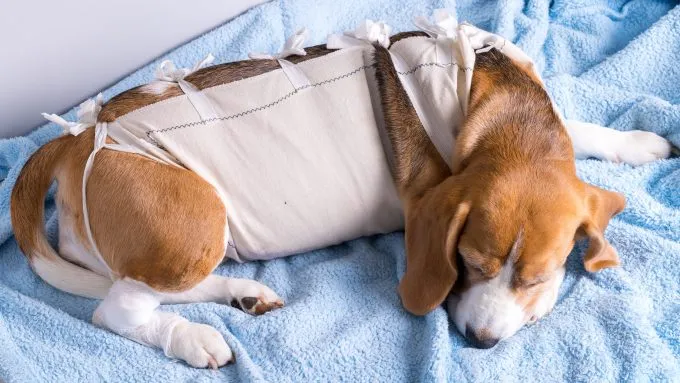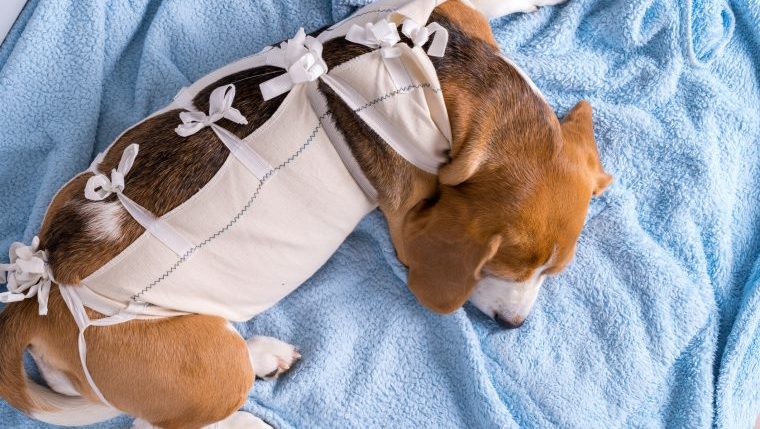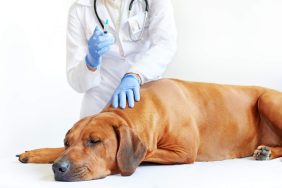
When your dog undergoes a surgical procedure, the last thing everyone needs is more stress. A torn surgical site can lead to more pain, longer recovery, and costly procedures to fix sutures and provide extra medications. However, surgical recovery suits can help reduce stress, prevent torn stitches, and give you some peace of mind.
What are surgical recovery suits?
A surgical recovery suit is a special compression suit that covers your dog’s body, but makes it easy to remove when your dog needs to go potty. These suits are designed to cover specific surgical sites, such as your dog’s belly after spay/neuter surgery, to prevent your dog from licking and chewing on the spot. Unlike traditional Elizabethan cone collars, these suits don’t restrict head movement. This makes it easier for your dog to perform normal functions like eating and drinking.
Common post-surgery issues in dogs
After surgery, your dog needs to rest and recover. Often, surgical procedures, such as spays, have several layers of sutures — usually in the body wall, muscles, and skin. These sutures need to stay in place to help the tissues knit back together and heal. In addition, the irritation can be itchy or painful, making your dog anxious.
If your dog happens to lick at the incision, it can cause a host of additional problems. Repeated licking can irritate the skin, causing it to swell and lengthen healing time. Bacteria from the mouth can also cause infections and painful discharge. A very determined dog may also remove their sutures which can mean a trip to the emergency vet.
How surgical recovery suits can help
By using a surgical recovery suit, you can prevent many of the complications that occur with a surgical procedure. The compression of a suit can aid in the healing process, reducing anxiety and irritation. In addition, the suit protects the incision, preventing your dog from being able to lick or chew at it.
Choosing the right surgical recovery suit
Always speak with your veterinarian when picking out a surgical recovery suit before your dog’s procedure. Your vet may recommend a different method, such as a donut cone, if the surgical site is in a strange location or needs air for better healing. Your vet can also make sure that the suit is the right size and material for your dog’s procedure.
The next step is to determine if your dog needs a full suit or only a recovery sleeve. Recovery sleeves cover only one limb and are great for dogs undergoing ACL repairs, elbow surgeries, or minor tumor removals on the limbs. Full-body surgical suits are better for abdominal surgeries where the entire body needs to be covered. You also want to make sure the material is breathable and fits snugly, but not so snugly that it interferes with movement or rubs against the incision.
Next, get your dog used to the surgical suit before your dog’s appointment. You’ll want to have them wear it for a few minutes at a time at first, offering treats and praise. Then, gradually increase the amount of time your dog wears it. This will help reduce the stress and anxiety of a “new thing” at the same time your dog is trying to heal.
Surgical recovery suits are a great tool to have on hand for your dog in the event of a surgical procedure. And, if you have a dog that is fearful of a traditional cone, they make a great alternative. As with any procedure, make sure you monitor your dog during their recovery and speak with your vet if you have any questions or concerns.









